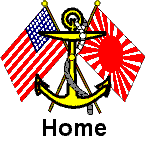|
 Vice Admiral Takeo Kurita surveyed his powerful Fleet while it lay at anchor at Brunei, Borneo. They just had finished a 1,000 mile journey from Lingga Roads near Singapore as part of the execution of the Japanese SHO plan, which was put in place anticipating the Americans’ move in the Pacific. He was a taciturn man fully schooled in the traditional Japanese naval officer values. Ever since he left home to attend the Etijima Academy located on the Inland Sea, he adopted the regimen that emphasized loyalty, discipline, and absolute conformity. His training, like the other naval officers that came before and after him at the academy, had the following characteristics: (1) the need for precise orders before executing them, (2) an inability to adopt to unexpected events during battle, (3) a weakness for not seeing an entire strategic picture but only looking for what was before them, and (4) an extreme aversion to taking risks during the heat of battle. While at Etijima, he passed an extremely demanding oral interview, a very difficult series of academic and physical tests, and a thorough character check on him and his entire family. Vice Admiral Takeo Kurita surveyed his powerful Fleet while it lay at anchor at Brunei, Borneo. They just had finished a 1,000 mile journey from Lingga Roads near Singapore as part of the execution of the Japanese SHO plan, which was put in place anticipating the Americans’ move in the Pacific. He was a taciturn man fully schooled in the traditional Japanese naval officer values. Ever since he left home to attend the Etijima Academy located on the Inland Sea, he adopted the regimen that emphasized loyalty, discipline, and absolute conformity. His training, like the other naval officers that came before and after him at the academy, had the following characteristics: (1) the need for precise orders before executing them, (2) an inability to adopt to unexpected events during battle, (3) a weakness for not seeing an entire strategic picture but only looking for what was before them, and (4) an extreme aversion to taking risks during the heat of battle. While at Etijima, he passed an extremely demanding oral interview, a very difficult series of academic and physical tests, and a thorough character check on him and his entire family.
His training at Etijima stressed the attainment of victory through a single, decisive battle with the enemy. The inter mural sports at the academy rewarded cadets who could win with one powerful movement or blow. In the martial art contest of Kendo, victory was awarded to the man who knocked down his opponent with one blow from a four foot club. In another sport called Botaoshi, a team would win this contest by capturing the other team's flag pole using every means possible. 
Therefore, Japanese naval strategy used highly intricate maneuvers that relied upon deception, diversion, and division of the enemy's forces to open a path to deliver one decisively powerful victorious blow. The Battle of Midway was an excellent example of this strategy where the Japanese tried to lure the American carriers into a position where the Japanese Fleet could destroy the entire American fleet in a single battle. There was never any consideration given to using the strategy of wearing down an opponent by a series of confrontations that would eventually dissipate the enemy's resources so the only path for him would be surrender.
After graduation, Kurita served on destroyers and cruisers while eventually rising to command a force protecting invasion transports in the Dutch East Indies. He led the bombardment group that was assigned to protect Japanese invasion forces at Midway. On October 14, 1942, he participated bombarding the American Marines on Guadalcanal. Kurita received promotion and commanded the Second Fleet at the Battle of the Philippine Sea. 
During his naval service, Kurita adopted the normal Japanese capacity for ultraconservative tactics and a disturbing tendency to always doubt the success of any mission he had been assigned. This resulted in behavior which resulted in timidity, indecisiveness, and irresolution. During the campaign at Guadalcanal, he retreated when four American torpedo boats charged his ships. At the Battle of the Philippine Sea, he was one of the first senior officers to advocate retreat. Then, it should not surprise anyone that he doubted his chances of success executing the SHO plan at Leyte Gulf. His powerful force was ordered to attack enemy transports without the benefit of air cover. Before he ever left Brunei, he was already prepared to retreat when confronted by daring attacks.
And he would do that when confronted by the incredibly courageous onslaught of Taffy 3’s destroyers, destroyer escorts and escort carrier aircraft off the island of Samar. 
|



